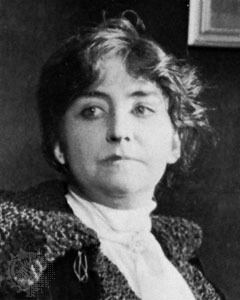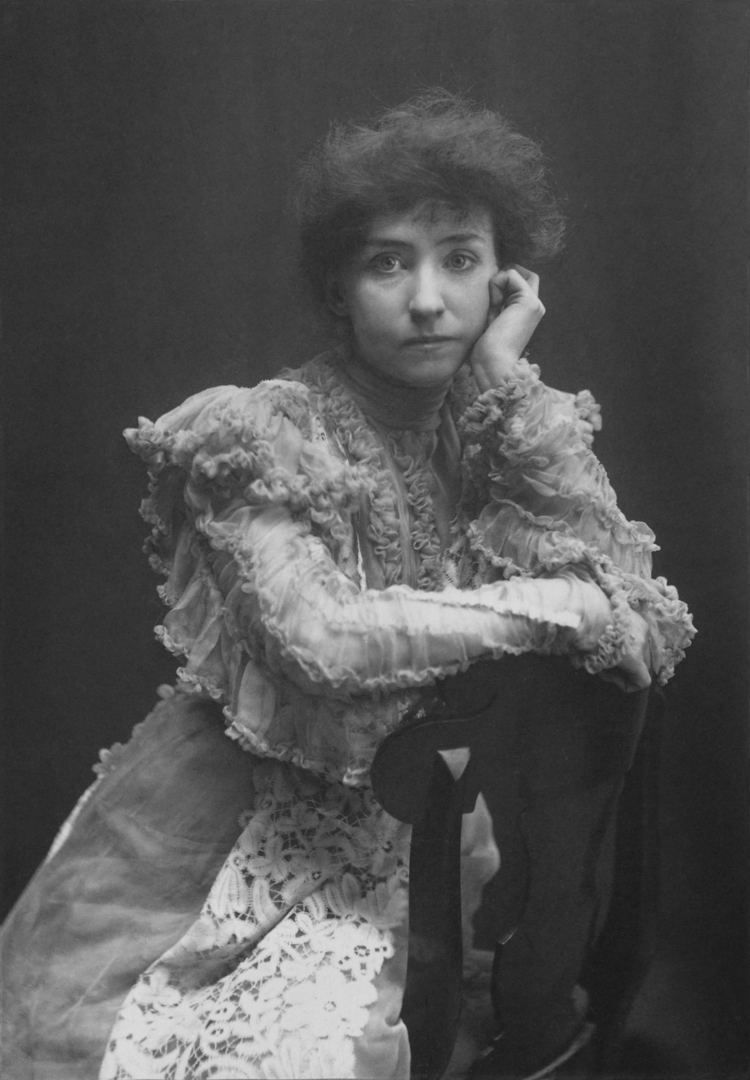Other names Minnie Maddern Fiske Movies Vanity Fair Role Actress | Name Minnie Fiske Occupation Actress, playwright | |
 | ||
Full Name Marie Augusta Davey Born December 19, 1865 ( 1865-12-19 ) New Orleans, Louisiana Died February 15, 1932, Queens, New York City, New York, United States People also search for Harrison Grey Fiske, Eugene Nowland, Charles Brabin | ||
Becky sharp minnie maddern fiske 1899 play in pictures based on vanity fair
Minnie Maddern Fiske (December 19, 1865 – February 15, 1932), born as Marie Augusta Davey with some sources quoting December 19, 1864, as her date of birth, but often billed simply as Mrs. Fiske, was one of the leading American actresses of the late nineteenth and early twentieth century. She also spearheaded the fight against the Theatrical Syndicate for the sake of artistic freedom. She was widely considered the most important actress on the American stage in the first quarter of the 20th century. Her performances in several Henrik Ibsen plays widely introduced American audiences to the Norwegian playwright.
Contents
- Becky sharp minnie maddern fiske 1899 play in pictures based on vanity fair
- Career
- Death
- Publications
- Filmography
- References

Career
Born in New Orleans, Louisiana, she was the daughter of stage manager Thomas Davey and actress Lizzie Maddern.
She performed her first professional show at the age of three as the Duke of York in Richard III. She debuted in New York as a four-year-old in the play A Sheep in Wolf's Clothing. She toured extensively as a child, and was educated in many convent schools. She was a child prodigy, touring and performing in numerous productions. According to the New York Times article "Ibsen or Shakespeare?" (March 18, 1928), Harrison Grey Fiske was 12 years old when he first set eyes on the future Mrs. Fiske—she was but eight, performing in a Shakespearean role. Her pay was in lollipops.
By the time she was 16, she was a leading lady, and was cast in the leading role of Chip in the play Fogg's Ferry. She was recognized for her unique beauty and singing voice. She married LeGrand White, a theater musician in Fogg's Ferry, but they divorced shortly thereafter.
Two years later, she married Harrison Grey Fiske in March 1890, and took three years off from the stage. Leaving a life of domesticity, she returned to the theatre in 1893 as a playwright and director, having written one-act plays such as A Light for St. Agnes, The Rose, and The Eyes of the Heart. She wrote several plays and collaborated with her husband in writing Fontenelle. Mr. Fiske directed virtually all of his wife's plays after their marriage.
After her husband's unsuccessful production of Hester Crewe, Minnie Maddern debuted as Nora in A Doll's House by Henrick Ibsen, at the Empire Theatre in New York, launching Ibsen's career because of her outstanding performance. She is perhaps most famous for starring as Becky Sharp in the original 1899 production of Langdon Mitchell's Becky Sharp, a play based on William Makepeace Thackeray's Vanity Fair. Among her many triumphs on the Broadway stage were: Becky Sharp (1899, revivals 1904, 1911), Tess of the d'Urbervilles (1897, revival 1902), A Doll's House (1902), Hedda Gabler (1903, revival 1904), Leah Kleschna (1904–05), Salvation Nell (1908–09), The High Road (1912–13), Madame Sand (1917–18), a play about George Sand; Mis' Nelly of N'Orleans (1919), Helena's Boys (1924), Ghosts (1927), Ladies of the Jury (1929–30), as well as her self-written plays The Rose (1905), The Eyes of the Heart (1905), A Light from St. Agnes (1906). Mrs. Fiske starred in everything from farce to tragedy and even appeared in a comedy with puppets Wake Up, Jonathan! (1921). Her final appearance on Broadway was in 1930 in an acclaimed production of The Rivals cast as Mrs. Malaprop.
In the mid-1910s, Mrs. Fiske starred in two feature film adaptions of two of her greatest stage triumphs, Tess Of the d'Urbervilles in 1913 and Vanity Fair in 1915, both of which were surprisingly successful with moviegoers, although she herself felt she was not at her best in the medium and declined further film work.
She was a pioneer for realism in acting, also supporting Ibsen's works for their honest portrayals of humanity. Her love for performing Ibsen over Shakespeare, and her position that Ibsen is the better study for actors, can not be overstated. She told The New York Times in January 1908:
"Ibsen is of interest to the actor because properly to understand a role you must study the character from its earliest childhood. Most Ibsen men and women have lived their lives before the curtain rises. Shakespeare has often been pronounced tedious by actors because his characters require a great deal of study. But even Shakespeare seems easy when compared with the thought that must be bestowed upon Ibsen. The beautiful verse, the wonderful character drawing of Shakespeare furnish solutions of perplexing problems, but Ibsen is so elusive. He fascinates by his aloofness. He is the Wagner of the drama. Wagner struggled for understanding just as Ibsen has struggled."
Although she was highly praised as an actor, she died poverty-stricken, having fought against a group of producers that organized the Theatrical Trust or Syndicate. This organization took control of first-class playhouses in the country, dictated the plays chosen, and the actors that were cast. She fought for artistic freedom for twelve years, which caused her to perform in third-class theatres, such as churches and skating rinks.
On top of her battle against the Syndicate, she was also one of the most prominent animal welfare advocates of her era. She fought against the wearing of snowy and great egrets on hats, raised awareness of the cruelties of fur trapping, and changed the treatment of cattle on ranges. Because she was well-known and loved, people followed her example and she was able to make a difference. She was twice named one of the twelve greatest living American women because of her fight for animal rights and for her outstanding talent. She was first named in 1923 by the League of Women Voters, and then again in 1931 by Good Housekeeping magazine. Mark Twain wrote the story "A Horse's Tale" for her.
Death
She died from congestive heart failure, at the age of 66, in Queens, New York. She and Harrison had no children. Around 1915 the couple did adopt an infant boy who would have been a teen at Mrs. Fiske's death in 1932. The actress Emily Stevens (1882–1928) was her cousin, as was Elizabeth Maddern, the first wife of author Jack London; she was also related to stage actress Merle Maddern (1887–1984). Robert Stevens, for 23 years the Director of the Rochester Community Players, and brother to Emily Stevens, was also a cousin.
In 1961, her papers (23,000 items, weighing in at 1,400 pounds) were donated to the United States Library of Congress.
